Apple MacBook Pro 16-inch M3 review: another big step up for the MacBook
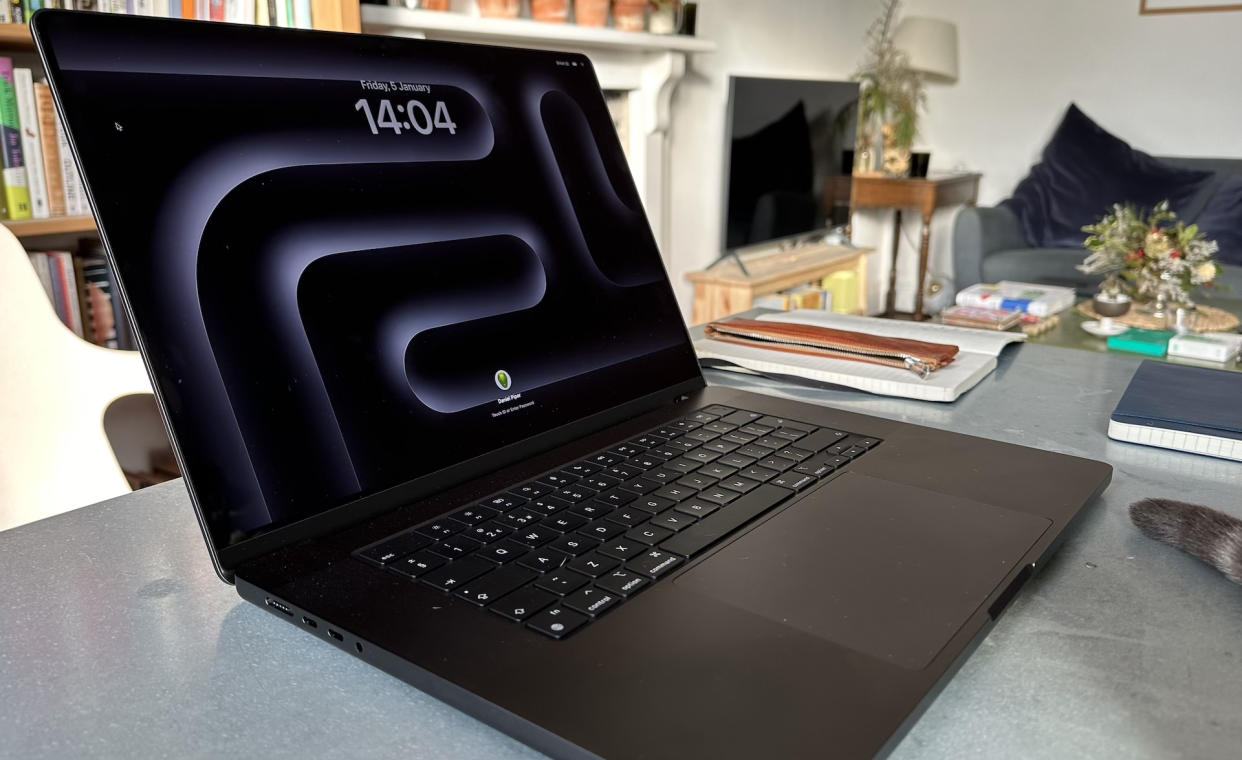
Apple has had a run of solid laptop releases over the last few years. Even the short-lived touch strip didn’t dent the reputation for performance blended with aesthetics and each new generation of Apple silicon seems to live up to the promise. 2023’s Macbook Pro M3 makes similar claims, but is it just another iteration of the same format?
The answer to that is a resounding yes but don’t be fooled into thinking that is a negative thing. The Macbook Pro format has been around for a long time now, with tweaks each year, some minor, others more significant. The clearest updates are almost always the processors which, since Apple’s move to its own silicon, has seen regular, large performance increases, solidifying the company's laptops claim to the top spots among the best laptops for graphic design, video editing and pretty much any resource-heavy creative task you can imagine.
MacBook Pro M3 review: Physical attributes
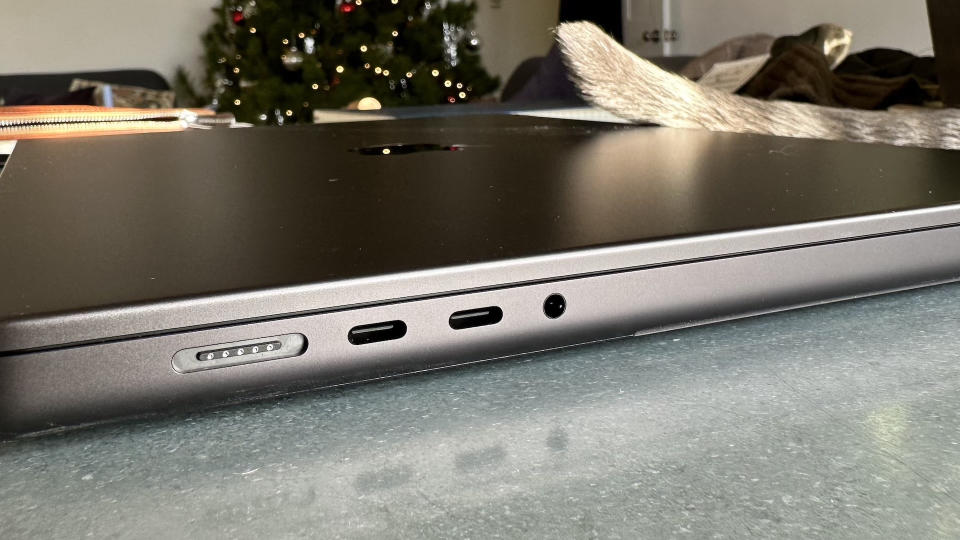
But what of the machine itself? The M3 is nearly identical to the previous model, with the same enclosure, ports and air vents, the same smooth hinge mechanism and keyboard (more on that later). Two USB-C ports on the left, a single USB-C, an HDMI and an SDXC card slot on the right. The base level M3 are USB-C 4 while the Max supports Thunderbolt 4, meaning you get faster charging, data transfer and video, including Displayport, through a single cable. These are very capable ports but it is still nice to see an HDMI port included.
The Space Black colour name doesn’t really suit, as the new model is definitely still silver, albeit a little darker than the outgoing model. The finish is a familiar smooth, almost matte one, feeling very premium. It does pick up fingerprints but resists them far better than a satin or glossy machine and wipes down easily.
The biggest difference is the new liquid retina XDR display, featuring promotion and pro reference. The 16” M3 Max I’ve been testing has a remarkable screen, showing excellent colour accuracy, brightness and contrast. Brightness of 1000 nits which can be ramped up to 1600 nits for HDR content is bang on the nose of Apple’s claims and there was never a time in testing where it felt at all underpowered, even in bright conditions. Often, a gloss-finished display can cause problems but the MBP is bright enough to overcome these issues.
I work with 3D animation and video-editing software and was concerned that Apple’s 120Hz refresh rate could, while excellent for the OS, cause some issues but the refresh rate can be locked, so timelines in Resolve act as expected. Thank you, Apple!
Now, back to interfacing with the M3 MacBook Pro.
MacBook Pro M3 review: Keyboard and trackpad
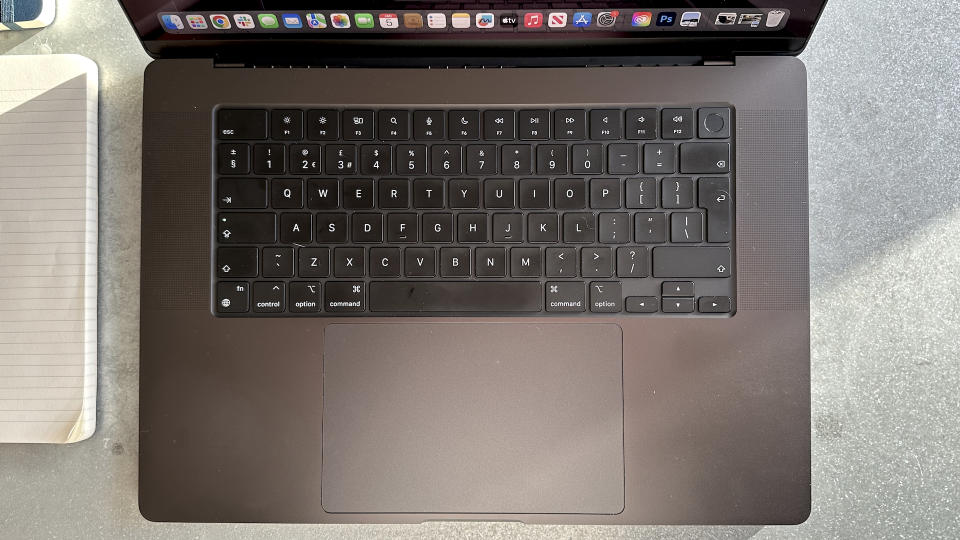
I’ve long been a fan of Apple’s keyboards and trackpads, although some previous models have been less than favourable. The 2023 model appears and feels the same as the previous model, which is a good thing. The backlit keys are low profile but feel responsive and act as if they have greater travel than they really do. The touch strip remains a thing of the past too. The idea was an interesting one but I’m far happier with physical keys, especially as I tend to have one hand on the keyboard and the other either on a tablet or space mouse, while doing 3D work. Even for typing tasks, like writing reviews, it’s easier to navigate by touch than having to look at a small display, ensuring the context-sensitive ‘buttons’ are what and where you remembered. So, all hail the physical function buttons, serving machine-specific tasks too, such as brightness, volume and media controls.
This top row of buttons houses the power on/off button, with its secondary function of fingerprint reader. These buttons can be less than consistently reliable but the MBP never skips a beat, easily recognising my input first time, every time. This can be used not just for unlocking a sleeping Mac but for online purchases, linked to an Apple Wallet, as well as the App Store. As with most keyboards these days there is no delete key, a negative for heavy-duty writers but less of an issue for most.
As with much of their hardware, Apple has stuck with a tried and tested format for the MBP’s trackpad, which remains responsive and well-sized and can be clicked as well as tapped to activate. Gestures are a big part of MacOS and the trackpad handles these perfectly. Pinching, tapping, swiping etc all register without any hiccups, making interacting with the MBP feel seamless. As a 3D artist, this is less important, as a trackpad isn’t ideal for these tasks, but for most tasks, it is exactly what is needed.
MacBook Pro M3 review: Performance anxiety
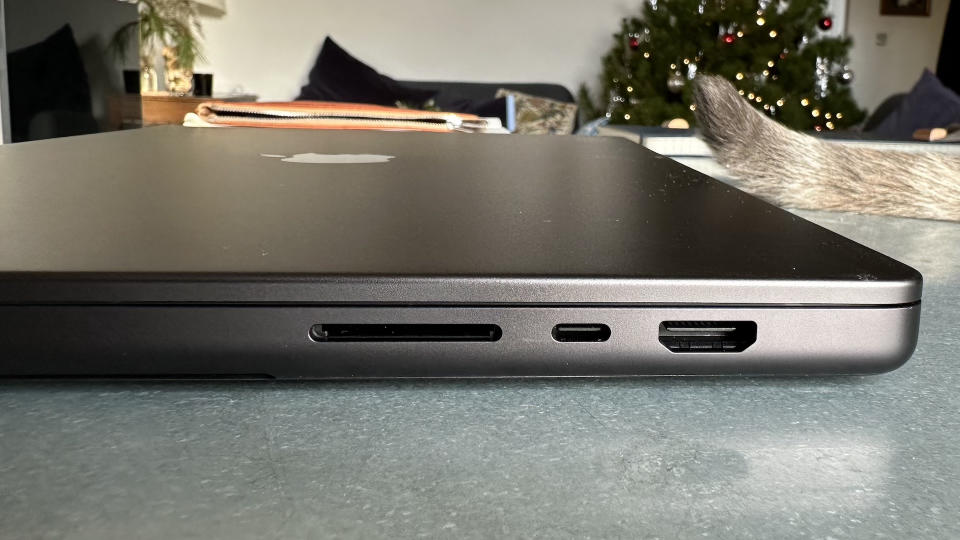
Each new generation of silicon promises significant advances in processing power. It's easy to get lost in the various specs of each machine and understanding what you get for your money can be tricky. As somewhat of a power user, for 3D work, image and video editing and so on, performance is money, so investments need to be made accordingly. Luckily, the M3 Max I’ve been testing makes that investment an easy decision to make. Apple’s claims are accurate and benchmarking testifies quite what a powerhouse the M3 is. It’s easy to think of combined CPU/GPU machines as somewhat compromised but take a look at the results here and you’ll see quite how much bang your buck gets you.
As a Cinema 4D user, I was really keen to see what Cinebench results would be and I was very pleasantly surprised with the 12,596 score in the Metal test, a clear winner over the competition. Metal is Apple’s hardware graphics acceleration and very clearly does the job very well. As a slight aside the M3, while it does warm up under load, never scorches your lap, the way some laptops can.
Scores in other areas are similarly impressive, with only the M1 Ultra beating the M3 but that was in the CPU-only test, in which the Ultra had more cores and arguably the CPU plays a less pivotal role in graphics tasks than was the case a few years ago.
Running benchmarks using Blender reinforces my view that the MPB is a viable replacement for a desktop machine in many scenarios, with excellent scores.
On top of that, using the machine for these tasks feels smooth and fluid. Benchmarking is fine but doesn’t reflect any hiccups or lagging issues that can be encountered in daily use. Interactive rendering runs with ease, so those Redshift users will be in for a treat. High polygon and model count scenes show no signs of slowdown and when video editing, even 8K or multicam timelines are responsive. Blackmagic Design DaVinci Resolve and Fusion projects feel super smooth, more so than even my 64-core Windows machine with a 3090.
In more general terms, the M3 Max operates smoothly at all times. Multitasking, large numbers of tabs in a browser, background rendering and watching media (all at one time) never caused a single blip.
MacBook Pro M3 review: Power to the people
With this level of performance under its belt, along with a large bright display, you’d be forgiven for thinking the MBP wouldn’t have enough power in the bank for extended working. That isn’t the case here though. I managed to work for 10 hours in Cinema 4D, before the power indicator turned red. The 100-watt-hour battery promises up to 22 hours of media playback, although that is via the Apple TV. If you do find yourself running low on juice, charging is fast either by USB-C or via the Magsafe 140-watt power supply.
As mentioned earlier the M3 never gets uncomfortably hot, so Apple has done a good job with heat management and venting.
Should I buy the Apple MacBook Pro M3?
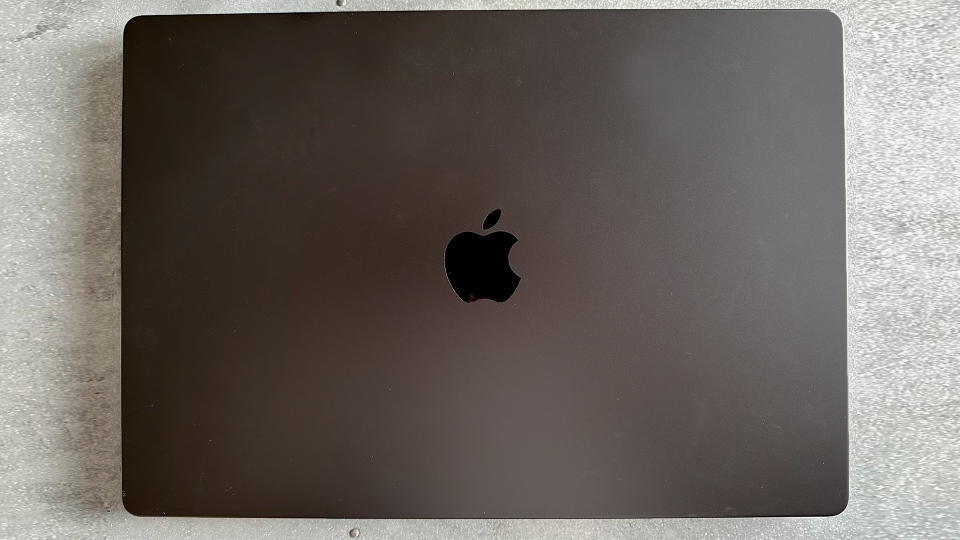
The Macbook Pro M3 Max takes a significant step up over its older siblings, with a large leap in performance, and a beautiful display in a sleek package. With up to 128GB RAM, 16-core CPU and 40-core GPU, there is an option for even the most performance-hungry user. No matter if you spend most of your time writing, working with still images, or rendering an 8K animation sequence, the MacBook Pro M3, and in particular the M3 Max, could well be the best portable computer for you.

